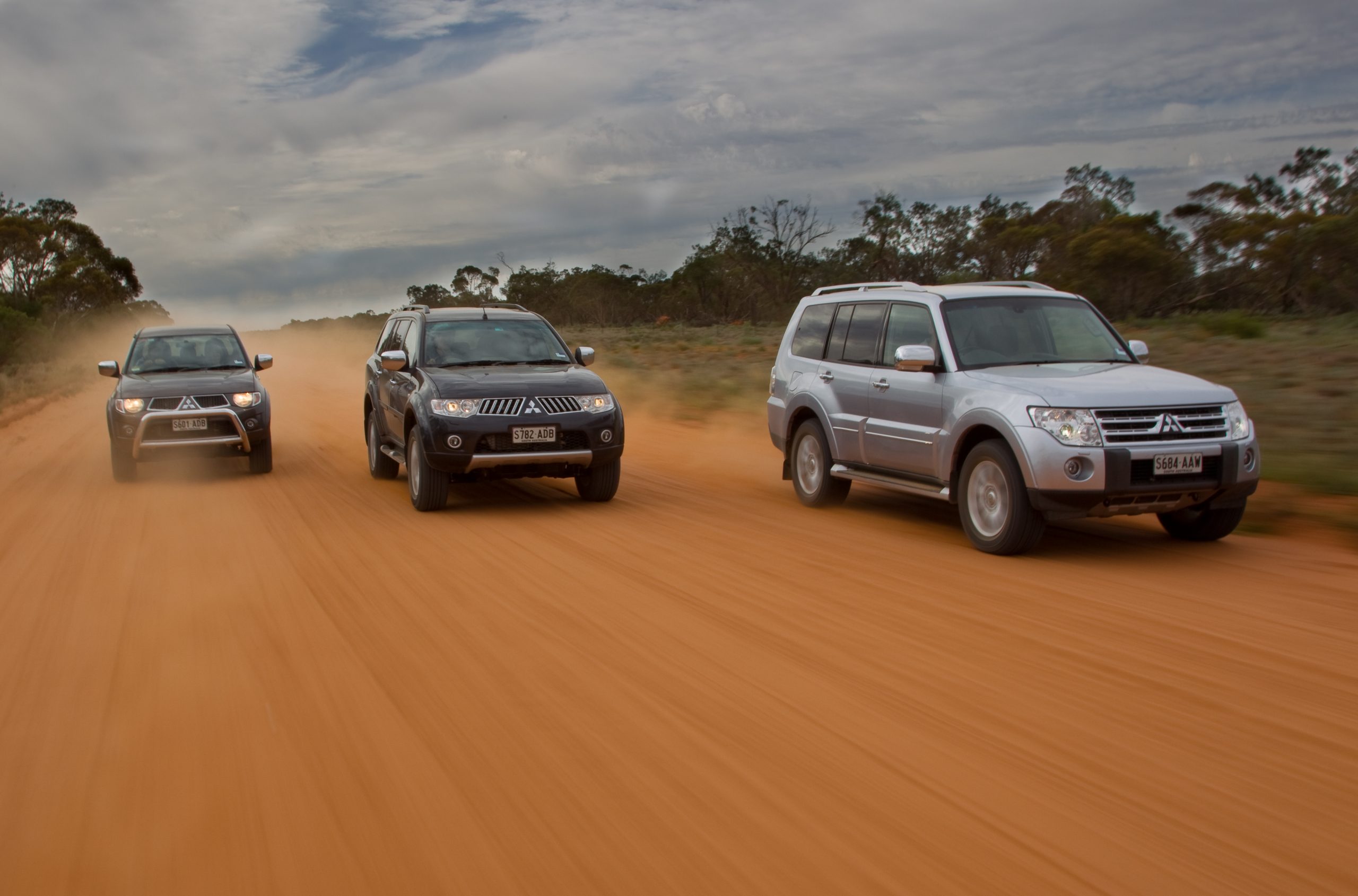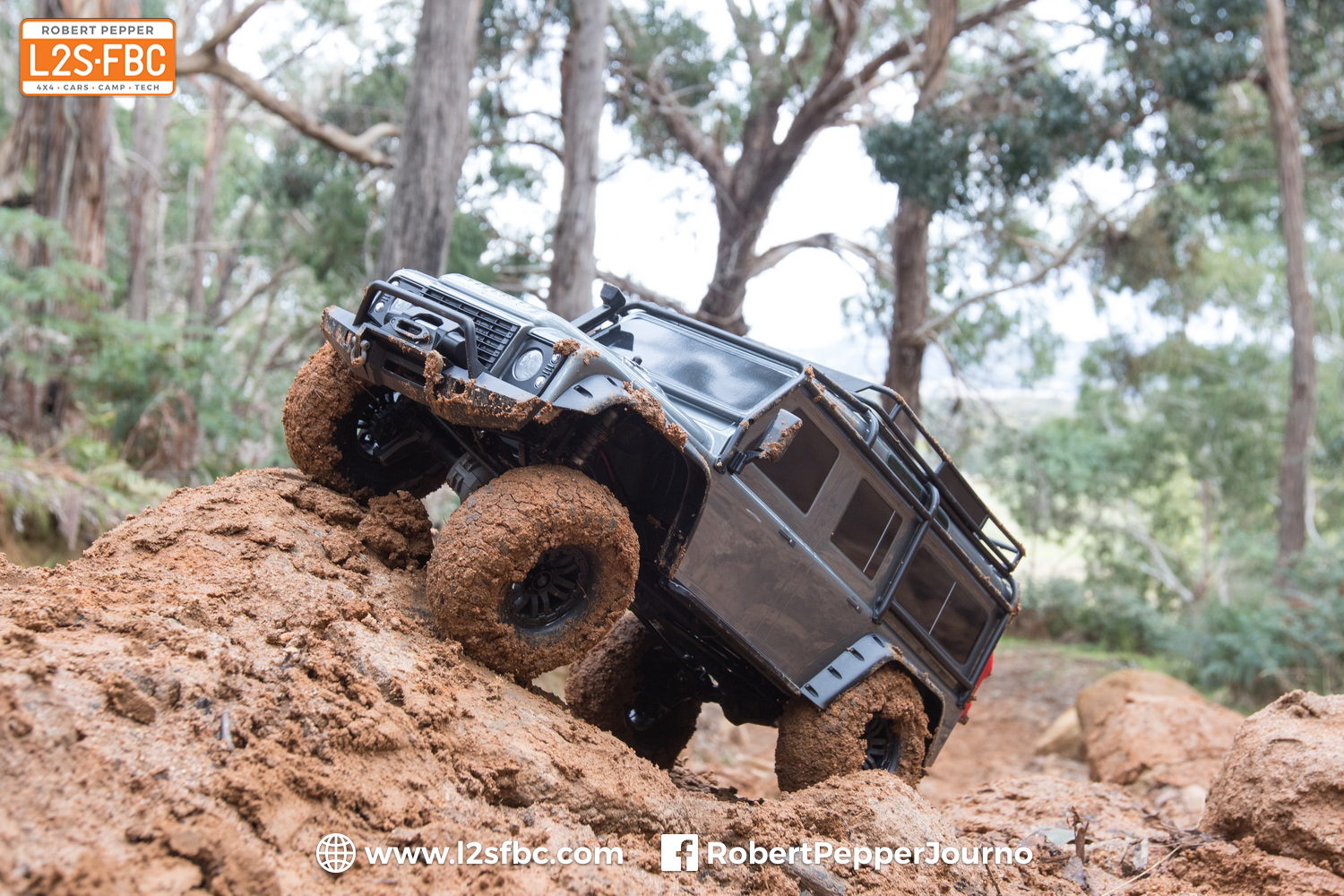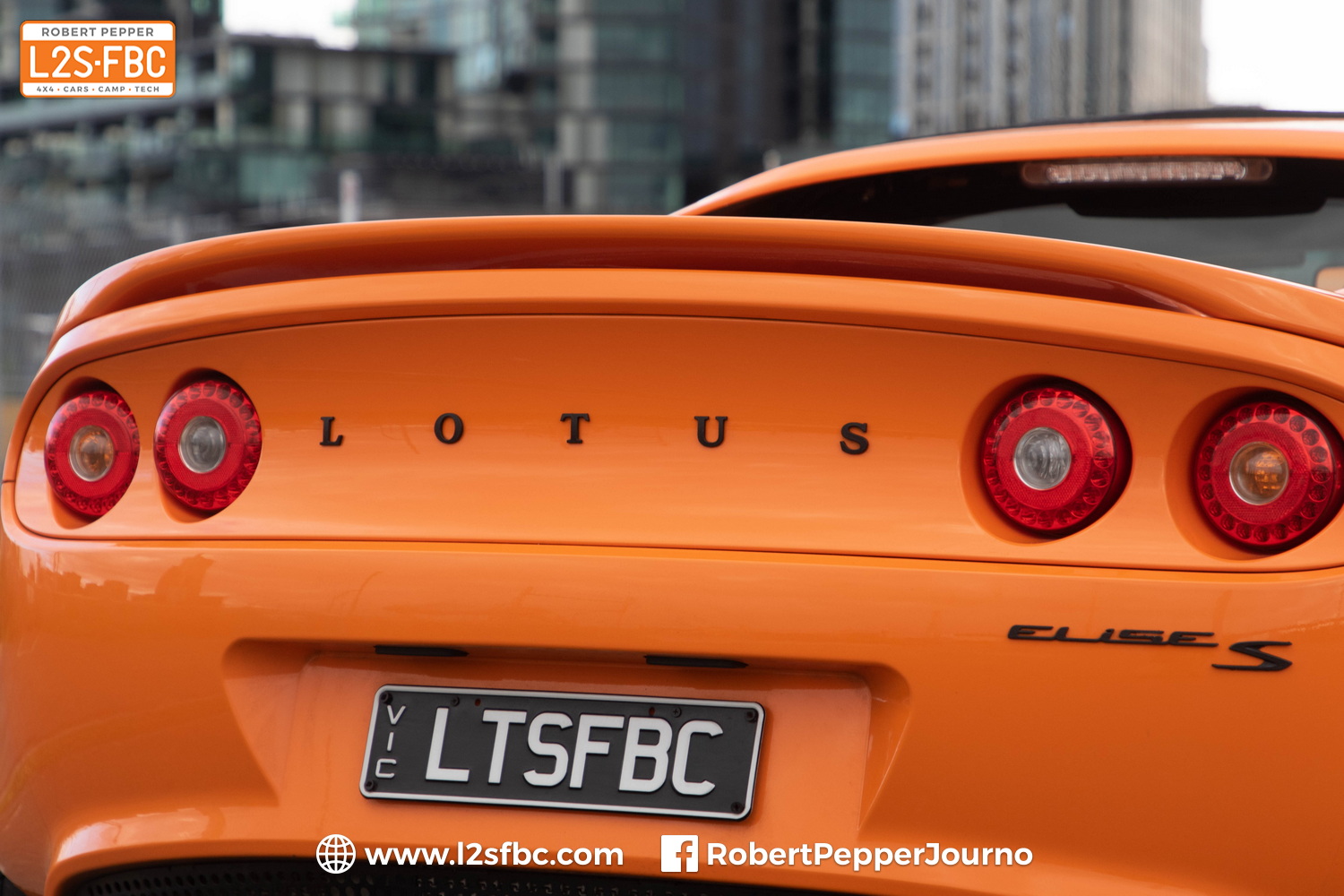
Mitsubishi Pajero, Triton and Challenger Flex
Which has the longest suspension travel?
- Pajero – fully-independent, coils
- Triton – independent coil front, live axle leaf rear
- Challenger – independent coil front, live axle coil rear
These photos always stir up a bit of debate so to pre-empt some of it — yes this is not a scientific test so make of it what you will.

The Triton has a leaf/live rear, coil independent front and a 3000mm wheelbase, Pajero is coil independent front and rear with a 2780mm wheelbase, and Challenger is coil/live rear, coil independent front with a 2800mm wheelbase. All three vehicles have been driven until the right rear is just off the ground. If there is much a difference in total wheel travel between the three it’s hard to see, but we did note during the operation that the Pajero seemed to have a little more flex on the front but slightly less on the rear. That would be a stability advantage in many cases instead of relying entirely on the rear for flex.
The Paj also had the independent-suspension advantage of no diff housing to hang up, with 225mm of clearance vs 220 for Challenger, and 200 for the Triton with its slightly smaller diameter tyres. Then again, when offroad the others have the live-axle advantage of one wheel moving up forcing the other down.
On the road there’s no comparison — the Pajero is streets ahead of the other two and indeed every other Japanese wagon, and in no small way is that due to the independent rear suspension (IRS) which means the rear bounces around far less, and can be fine-tuned with alignment settings like camber.
Offroad is where the Pajero should lose out, but as the photos show, it matches the others for flex and has better clearance. In fact, offroaders need to stop worshipping at the holy grail of axle flex because more is not always better. As axles flex ground clearance is lost, whereas if there’s no flex, no loss. In times past you needed flex because as soon as a wheel lifted into the air the magic of a differential would see drive lost to that axle. Now with modern traction control, and Mitsu’s is pretty good, that’s much less of a problem so wheels can be lifted and slow, controlled progress can continue. Hence less need for axle flex with its ground-clearance loss disadvantage. But It’s not all gain, as any vehicle with only three wheels on the ground obviously loses traction and stabilty relative to one with four wheels on the ground.
The bottom line is that while the Pajero clearly shades the others onroad, there’s nothing the two live-axle rear vehicles can do offroad that the Pajero can’t do just as well or better, and it has the advantage of the strongest and most tractable engine.
Live axles? Who needs them!


